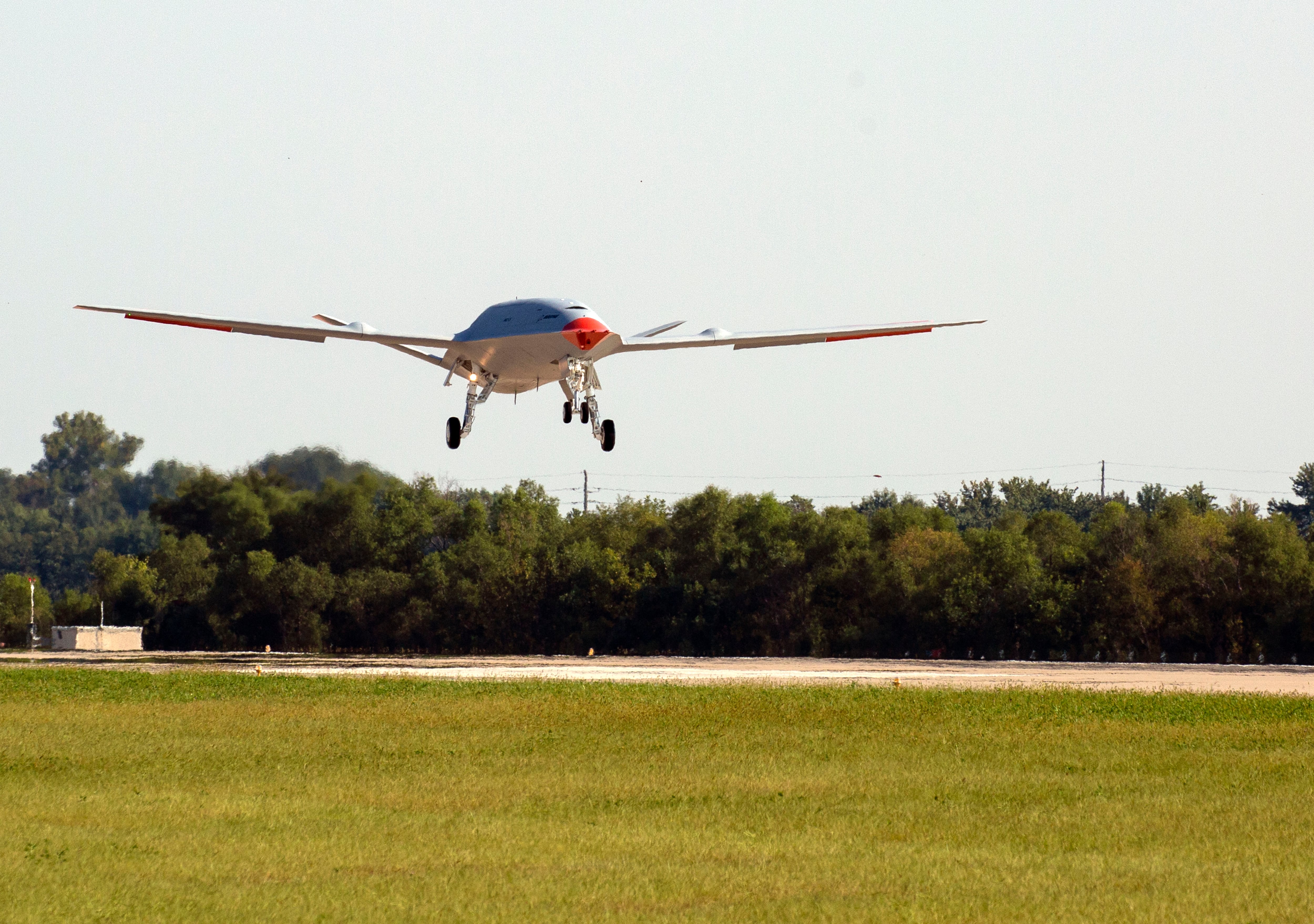WASHINGTON — The US Navy could face a three-year delay in testing of the MQ-25 Stingray carrier-based tanking drone if it doesn’t get its designated test ships through the required modernizations on time, a possibility the Navy said was remote.
Two carriers — Carl Vinson and George H.W. Bush — have limited windows to complete the installation of unmanned aircraft control stations, and if operational commitments intervene it could create significant issues for the program, according to Navy officials and a government watchdog report.
“Program officials stated that, among other things, the Navy’s potential inability to maintain its schedule commitments could require modifications to the contract that would impact the fixed-price terms,” the Government Accountability Office reported. “Specifically, the Navy faces limited flexibility to install MQ-25 control centers on aircraft carriers.
“If the Navy misses any of its planned installation windows, the program would have to extend MQ-25 development testing by up to 3 years. According to officials, such a delay could necessitate a delay to initial capability and result in a cost increase.”
RELATED

Navy officials say a three-year delay is “extremely unlikely,” however the Navy has struggled in recent years to balance its modernization schedules with operational commitments, a problem that its “Optimized Fleet Response Plan” deployment rotation scheme was supposed to address. Ultimately, a delay would further push back the Navy’s ability to extend its carrier air wing’s range through unmanned tanking, critical to keeping the service’s powerful strike arm relevant against long-range guided munitions.
The Navy believes it can avoid a schedule delay and is working toward keeping the program on track, said Jamie Cosgrove, a spokesperson for Naval Air Systems Command.
“The Navy is still planning to achieve [initial operating capability] in 2024,” Cosgrove said. “A three-year extension of development testing and a delay to IOC is extremely unlikely and represents improbable scenarios where both aircraft carriers currently designated to support MQ-25 testing are unavailable due to operational requirements, or the program misses the planned periods to install the MQ-25 test equipment on those two carriers.
“Should either of these unlikely scenarios occur, the program will reevaluate the schedule and determine how to best mitigate schedule impacts to deliver the mission-critical MQ-25 to the Fleet ASAP.”
Unmanned control
The specific alternations needed to operate the MQ-25 Stingray include special control and network equipment, Cosgrove said.
The program of record is the Unmanned Carrier Aviation Mission Control System and installing it will include setting up a control room known as the Unmanned Aviation Warfare Center on the ship. The equipment in the UAWC will include control stations, network interfaces and routing equipment, commanding and control equipment and network infrastructure, Consgrove said.
The Navy awarded Boeing an $805 million contract to build the first four MQ-25 aircraft, with options for three additional aircraft. In April, the Navy announced it had exercised the option to the tune of $84.7 million, bringing the total number of Stingrays under contract to 7.
Ultimately the Navy plans to buy 69 additional aircraft as part of the its full production run, according to the GAO report.
The Navy’s former air boss Vice Adm. Mike Shoemaker told USNI Proceedings in a 2017 interview that the MQ-25 would extend the carrier air wing’s range by up to 400 miles.
Juggling maintenance
The Navy has struggled to maintain its carrier schedules in recent years as the problems have arisen with carriers during their availabilities. For example, last year, the carrier Abraham Lincoln was extended on its deployment because its relief, the carrier Harry S Truman, was stuck in maintenance to repair unforeseen issues.
That can throw a monkey wrench into the Navy’s overstretched deployment rotation scheme, meaning that other carriers have their deployments extended while still others have their maintenance availabilities truncated to play catch up. But that can lead to even more problems down the road with differed maintenance and worn-out equipment that ultimately adds up to a significant readiness hole that is tough to dig out from.
All of this is exacerbated by crushing demands from Combatant Commanders for Navy forces overseas, which ultimately is driving the vicious cycle.
That means the Navy will have to manage the risk of impacting the Vinson and Bush’s upcoming maintenance availabilities to not set back the MQ-25 development cycle.
David B. Larter was the naval warfare reporter for Defense News.








